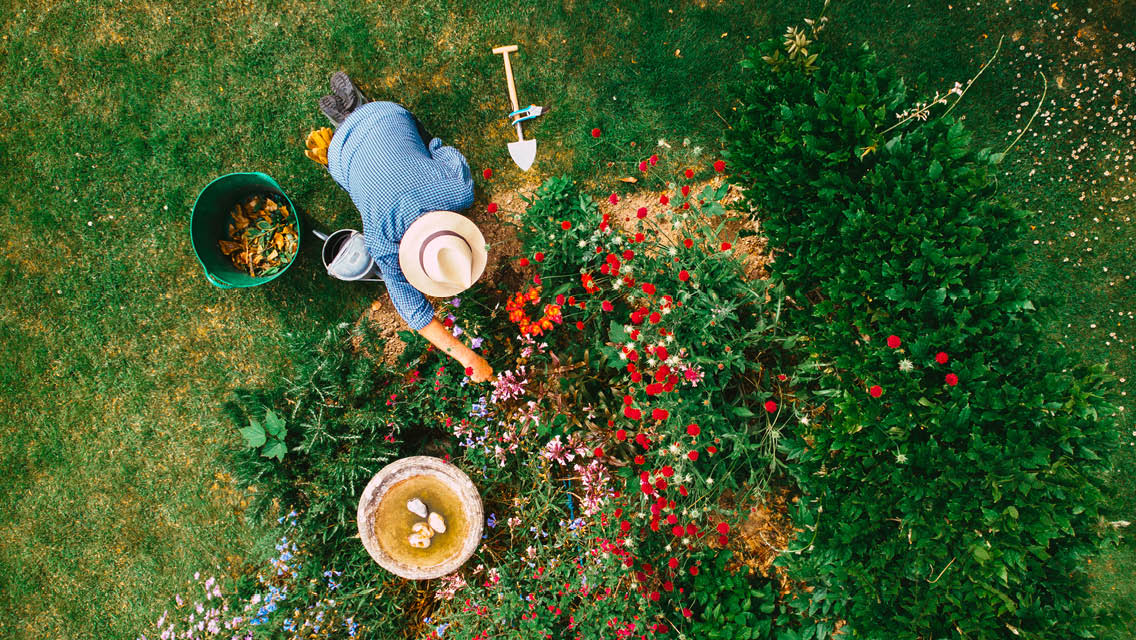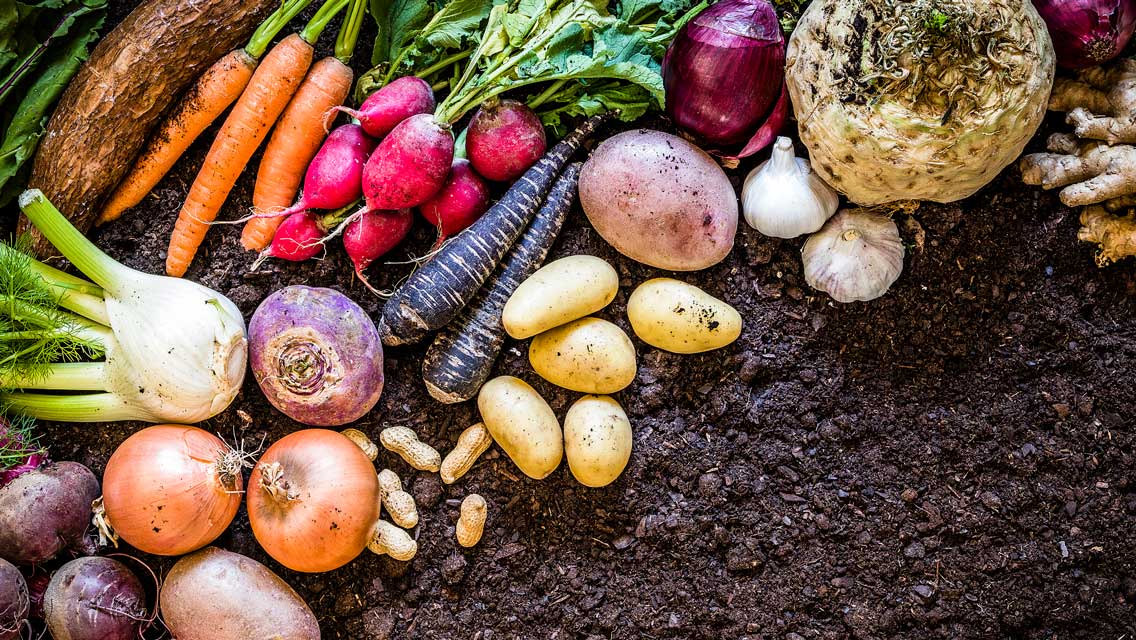1) Buy organic or regenerative organic when possible.
Paying extra for certified organic food will protect you from most pesticide, herbicide, and fertilizer residue, as well as from subtherapeutic antibiotics in meat and bioengineered crops. Regenerative organic is a new nongovernment certification ensuring that food is free from those agricultural toxins and comes from farms that embrace soil health, animal welfare, and social fairness.
2) Buy local.
“The amount of time that food is shipped and stored really changes the concentrations of healthy antioxidants and polyphenolics in our food,” says Kristine Nichols, PhD, lead soil scientist at the Food Water Wellness Foundation. (See “Closer to Home: 5 Steps Toward Eating Local.”)
3) Talk to the farmer.
Ask questions the next time you’re at the farmers’ market: Do you practice no-till agriculture? Do you use synthetic fertilizer and killing chemicals? If so, how often? How does your farm promote biodiversity? Are there animals on the farm? Do you live on the farm?
According to integrative physician Daphne Miller, MD, author of Farmacology: Total Health From the Ground Up, farmers who live on their land and eat from it themselves are more likely to take good care of their soil.
4) Use all your senses.
When you’re shopping for produce, Miller recommends, rely on more than your eyes. “Plants’ interaction with soil and the environment produces strong smells and tastes,” she notes. “These can be markers for higher phytonutrient levels. They’re like mini medicines and are good for health.”
5) Embrace blemishes.
“I tell my kids that when you see a little bug hole on a fruit or vegetable, that’s often the healthiest one,” says neurologist Maya Shetreat, MD, author of The Dirt Cure. “That’s the one that has up-regulated phytonutrients to protect and repair itself.”
6) Buy meat, dairy, and eggs from pastured animals.
Pastures are intact landscapes with healthy soil (most are rarely tilled or sprayed with agrochemicals), and the wide variety of plants growing there provides great forage.
“Much of what grows in a native grassland or healthy pasture has some medicinal use,” says Didi Pershouse, author of The Ecology of Care. “Grazing animals are basically eating herbs all day long, and many of those plant essential oils have positive health benefits.”
(Modern feedlots produce plentiful and inexpensive meat — but at what cost to environmental and human health? Learn more at “The CAFO Conundrum.”)
7) Grow your own.
Nothing is fresher and offers more intact nutrients than something picked minutes before you eat it. (Of course, you need to start with healthy soil! Check with your local university extension service for advice on how to create your own healthy-soil ecosystem.) Miller suggests concentrating on growing nutrient-dense plants like herbs and bitter greens.





This Post Has 0 Comments